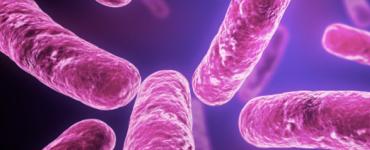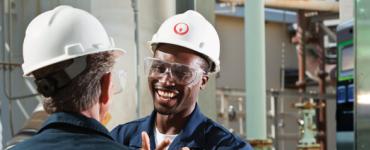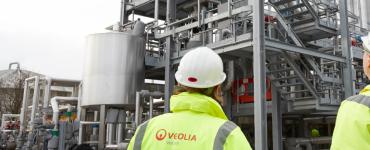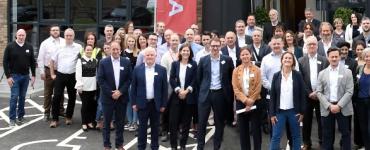- Home
- Latest News
- Ultrapure Water for Graphene Research
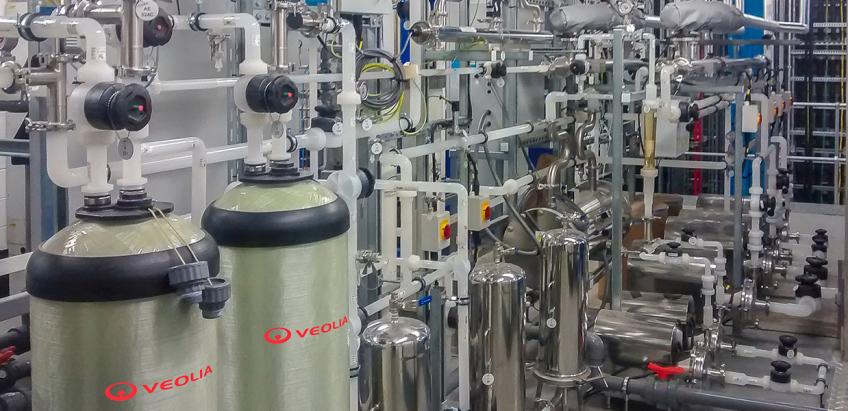
Ultrapure Water for Graphene Research
Greg Pilbrow, Sales Director, Veolia Water Technologies UK, describes the ultrapure water system installed in a cleanroom for graphene research
In March 2015, the Chancellor of the Exchequer, George Osborne, opened the National Graphene Institute (NGI), a research facility dedicated to understanding the science of this amazing material and applying this knowledge to develop new applications.
Graphene is the world's thinnest, strongest and most conductive material. It is a zero-gap semiconductor, has a specific surface area comparable to that of activated carbon and is almost completely transparent, yet so dense that even helium cannot pass through it. Its properties are still being investigated but its potential applications range from microelectronics to structural engineering.
The £61m NGI facility was built, appropriately, at the University of Manchester where the material was first isolated by Andre Geim and Konstantin Novoselov. Some £38m of the funding came from the Government, as part of £50m allocated for graphene research, and the balance from the European Regional Development Fund (ERDF). The NGI operates as a'hub and spoke' model, working with other UK institutions involved in graphene research. The 7,800 square metre building houses state-of-the-art facilities including two Class 100,000 clean rooms. The building services contract for the project, which won the prestigious Project of the Year in this year's H&V News Awards, was awarded to Balfour Beatty Engineering Services. This included the design supply and installation of a 3,000 litres per hour ultrapure water (UPW) system for the clean rooms, and this they entrusted to Veolia Water Technologies UK.
In keeping with the cutting edge research to be carried out at NGI, the specified ultrapure water quality is in advance of current practice. It is based on the ASTM D5127 Standard Guide for Ultra Pure Water used in the Electronics and Semiconductor Industry Type E1.2, currently the highest quality standard. However, NGI's UPW specification requires a number of parameters to be at significantly lower concentrations, presenting a challenge for current water purification technologies. Veolia's engineers, who are experts in designing water treatment systems, decided to create a bespoke water purification and distribution system to serve the 32 points of use in the clean rooms.
The system consists of three sections: pre-treatment, primary deionisation and UPW polishing. First, the raw water from the building water services supply is filtered through a 10µm cartridge filter before entering a raw water tank from which it is pumped through a granular activated carbon filter to remove free chlorine, which would cause oxidative attack on the membranes in the downstream primary deionisation plant. The carbon filtered water is softened to protect the downstream equipment from hard water scale and to increase the recovery of the membrane plant in order to minimise waste water.
Duplex softened water pumps then feed a twin pass reverse osmosis plant for primary deionisation. The first pass removes 95-98% of dissolved ionic and organic contaminants from the water. It operates at 75% recovery, which means that three quarters of the feed water emerges as "permeate" with the remaining water, containing all the removed contaminants, rejected to the building's rain water harvesting system for reuse - to reduce water waste. The first pass permeate is collected in a permeate tank and dosed with sodium hydroxide to convert dissolved carbon dioxide gas, which easily passes through reverse osmosis membranes, into carbonate which is removed. It is then pumped to a second pass reverse osmosis, where the recovery is 90%. The 10% reject flow, which is of better quality than the raw water, is returned to the raw water tank. Permeate from this second pass reverse osmosis unit is treated by continuous electro-deionisation (CEDI) - a process that combines ion exchange and membranes - to produce high purity water of resistivity greater than 10MΩ.cm. CEDI is followed by irradiation with ultraviolet light of 185nm photo-oxidising wavelength to oxidise any residual organic matter to carbon dioxide which, in turn, is removed, along with dissolved oxygen, by membrane degassing. The resulting high purity water is passed to a 7,000 litre UPW tank or, if the tank is full, it's automatically recycled to the permeate tank.
Producing UPW is difficult because it uses a number of processes in series to remove different types of contaminants, but each process is a potential source of a different type of contaminant. For example, UV irradiation oxidises traces of organic matter into carbon dioxide and water reducing the TOC, but the resulting carbon dioxide dissolves to form bicarbonate ions reducing the water's resistivity. Storing UPW is even more difficult because it may leach impurities from the containers, and even a tiny in-leak of atmospheric air can carry contaminants, so continuous "polishing" is essential to maintain purity. The 7,000 litre UPW tank is part of the polishing system. It is sealed and nitrogen blanketed to prevent ingress of atmospheric contaminants like oxygen, carbon dioxide and airborne bacteria, as the tank level changes. The water is pumped through another 185nm UV photo-oxidation unit followed by two PVDF lined cylinders, arranged in series and containing virgin mixed bed deionisation resin, which carry out the final polishing to 18.2MΩ.cm. Resistivity is monitored between and after the two cylinders to provide an early warning when they need to be replaced.This is followed by a 0.1µm absolute cartridge filter, a UV lamp, operating at the germicidal wavelength of 254nm, and an ultrafilter that combine to ensure that the water is free from particles and bacterially pure. The resulting UPW is continuously circulated to points of use by a PVDF distribution loop, with unused water returning to the UPW tank. An hygienic heat exchanger is included to maintain the UPW temperature in the loop at 70±2°C.
The distribution loop is constructed from virgin PVDF pipework, the most inert engineering material available. It ensures that there is no significant leaching of contaminants from the pipe into the water, and the smooth internal surfaces, welded construction and zero dead leg valves provide no areas for bacteria to colonise. The PVDF pipework was all delivered capped and double bagged, and fabrication was, as far as possible, carried out in an on-site Class 1,000 clean room. Assembled pipe sections were capped and double bagged within the clean room before being taken to the installation area where field joints were assembled within a mobile tent which provided a HEPA filtered clean environment. The loop was flushed with UPW prior to commissioning and all the flushing water was discharged to the rain water harvesting system.
The process plant is controlled by a PLC, which interfaces with a SCADA (supervisory control and data acquisition) system providing online monitoring of a range of process and water quality parameters, including; flow pressure, temperature and tank levels resistivity, TOC, dissolved oxygen and particle count. The water purification and distribution system has been engineered with sustainability as a priority, minimising energy and water consumption whilst extending the working life of key elements of the system. Treatment processes require no chemicals other than salt for regeneration of the water softeners and disinfectant solutions for routine sanitisation. Waste water from the RO, CEDI and ultra filters is recycled internally and other waste water is recovered in the building's rain water harvesting system. To minimise power consumption in periods of low water demand, the pumps in the systems are fitted with inverter drives.
Balfour Beatty's Contracts Manager, Gabriel Bennett, was pleased with the result. "In making the H&V News Award, the judges recognised the complexity and quality of the building services installation", he says. "Veolia's industry leading water systems was a major factor in that decision."

